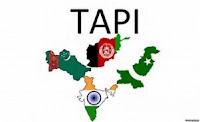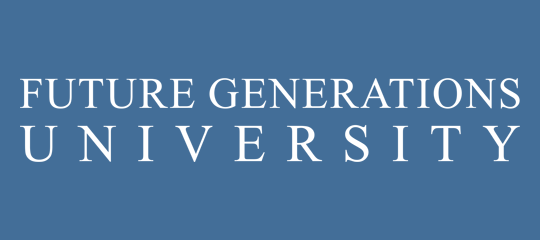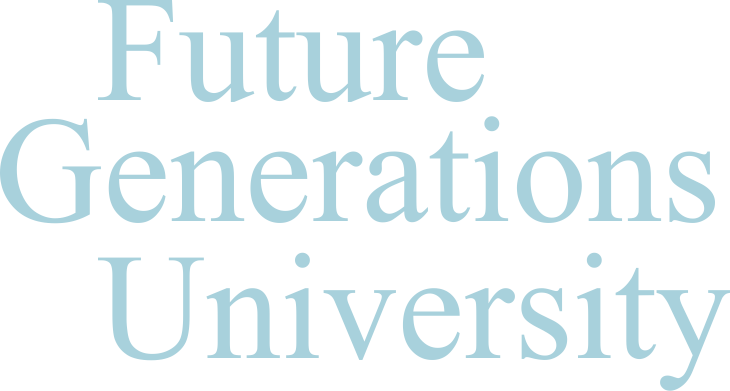As a human, my work, behavior, and future plans all are making an impact on the planet’s finite resources– simply by living , I am using resources.
From the usage of water to caring for nature, building safe environments, creating opportunities for the next generations… The examples go on and on. Simply put, every one of us has a strong direct impact on the planet’s finite resources. And yet there is a huge percentage of the population of humans in this world that can’t get access to clean water. I, in one corner of this world, have more than enough access to this resource. How I am using this opportunity of having unlimited access to clean water, which is not available to others in the world, makes a large impact on our planet’s finite resources.
Comparison of Afghanistan, Iran, and Pakistan
Examining the similarities and differences of Afghanistan with Pakistan and Iran makes for an interesting comparison; Pakistan and Iran both are economically stabilized countries, maintain armies, industries, and have higher populations. Conversely, Afghanistan has had to grow during more than 4 decades of war, building everything from scratch, dependent upon assistance from the international community, with very a low economic system, low revenue, and most prevalently, the ongoing threats of insurgency. This creates a large difference between Afghanistan and the two neighboring countries mentioned.
Similarities:
Afghanistan and Pakistan are both in Southeast Asia, which neighbors world super economic power, China. On the other hand, Iran serves as a connecting point between Southeast Asia and the Middle East. At a quick glance, these three countries are all faced with the ongoing threat of insurgency insurgency, however, only Afghanistan is currently involved in actively fighting this problem. The other two aforementioned countries are also involved, but this involvement decreases going from Pakistan towards Iran.
Insurgency aside, the potential for economic growth and power that exists in this region, for all three countries, is similar. These three countries are located in an important geo-politically strategic location. If we think of the trade of natural gas from Iran to Central Asia, and consider the abundance of Iran’s natural resources, Afghanistan is the only bridge in between the two areas, which creates a big economic impact on the region. The same Afghanistan serves as the in-between for connecting Central Asia with Southeast Asia.
 Turkmenistan, Afghanistan, Pakistan, and India, just recently started the TAPI project, which will further establish Afghanistan as a connecting point for Central and Southeast Asia. Through this project, natural gas will be sent from Turkmenistan to Pakistan, via Afghanistan, and then via Pakistan to India. The similarities, from an economic standpoint, can be seen as significant. The contribution from all of these countries, and in general, Central Asia with Southeast Asia, makes a great impact on the planet’s finite resources. This is especially so in the case of Central Asia’s supply of natural gas, and the high demand for it in Southeast Asia.
Turkmenistan, Afghanistan, Pakistan, and India, just recently started the TAPI project, which will further establish Afghanistan as a connecting point for Central and Southeast Asia. Through this project, natural gas will be sent from Turkmenistan to Pakistan, via Afghanistan, and then via Pakistan to India. The similarities, from an economic standpoint, can be seen as significant. The contribution from all of these countries, and in general, Central Asia with Southeast Asia, makes a great impact on the planet’s finite resources. This is especially so in the case of Central Asia’s supply of natural gas, and the high demand for it in Southeast Asia.
Differences:
Unfortunately, many differences also exist between these three countries. The fight against terrorism in the region, Afghanistan’s long-lasting war, Pakistan’s involvement, Iran’s involvement, etc. all makes a big difference. Furthermore, while Pakistan has access to nuclear weapons and Iran is trying to make it for themselves, or use the uranium for the energy purposes, Afghanistan has no involvement in this regard. All of which makes Afghanistan a strange white elephant in the corner of the room.
Both Iran and Pakistan are well-enough-stabilized countries from their economic and military prospects, while Afghanistan is not even at the initial stage of such a comparison. While Iran and Pakistan are working towards their financial and economic strategies, and thinking of ways to grow their economies stronger and stronger for their people, Afghanistan struggles to at the very least provide a safe environment for its people, and to avoid the resulting huge migration flows of its populations to European countries.
Another big difference is Afghanistan struggling to bring peace and prosperity to its people. And while Afghanistan has a high amount of natural resources, it has not the facilities to extract or to use them. Meanwhile, Iran produces a significant amount of the oil in the world and the profits put it in a higher position than the other two countries being examined. A further complication: while the international community is trying to help Afghanistan in fighting against terrorism, Afghanistan blames Pakistan and Iran for supporting and creating insurgency in the region.
Economical differences aside, socially and politically, these three countries differ from one another. Iran has a combined version of democracy and religion, which rules the country while ignoring its minorities. Pakistan claims a democratic governance system with the incorporation of Islamic values, and has a categorized public with high, medium, and low incomes. This “normal” people can’t reasonably hope to ever become president, minister, or manager in a government institution as a result.
Afghanistan has tried the new cut-and-paste democracy of the West, with its localized values. Unfortunately, in a similar manner to Pakistan, the society is growing into categorized subsets of people, with the very high and very low income, and the middle class. This greatly limits the abilities of those not in the high income category.
Each of these countries is arguably corrupt and not honest with its people. Additionally, the nuclear facilities in Pakistan and Iran, and the usage of the uranium to build nuclear weapons or as an energy source, has had a very strong negative impact on the planet’s resources. The practices has been damaging to the environment, destroyed societies, and brought more fear to its citizens. Religions is also a common source of power in each of the three countries, but currently all of these countries are trying to maintain positive relationships with the West.
The Main Factors Subject to Difference:
-
Huge population of Pakistan, and the ongoing fear of poverty in this country
-
The economic crises in Iran
-
The ongoing insurgency and terrorism threats in Afghanistan
-
The ongoing fear and increase in the percentage of poverty in Afghanistan
Conclusion of Differences, Potential Directions to be Taken
To conclude, Afghanistan has the potential to transform into the economic center of Asia. It is able to connect the central and south regions, and to connect Southeast Asia to the Middle East. Pakistan could transform its industrialized economy to one of greater success, using this to aid in the ongoing efforts against terrorism and to bring peace to the region. Iran could make its economy even stronger also aiding in the fight against terrorism so that they can expand their oil business via Afghanistan to China and Southeast Asian countries.
Additionally, Afghanistan’s access to unlimited water can be also be seen as a difference, and so an asset. If Afghanistan gets stabilized and in accordance with international laws and norms, it could seek to set a price for its extra water, which Pakistan and Iran currently use for free. This would benefit the country economically and help it to not rely as much on the international community.
Personal Footprint
 |
| Afghanistan |
There are many positive things to be said for Afghanistan that rarely get acknowledged. The natural beauty, green landscape, natural mines, rarely seen animals, and things of this nature are among our planet’s greatest finite resources.
Pakistan is a larger country than Afghanistan, with a higher population and more stability.
Iran is well-stabilized economically, due to its abundance of natural resources, especially natural gas, and an industrialized economy.
Living in Afghanistan with limited resources, and low development in terms of transportation, connection to the outside world, education, and employment, are the biggest factors that affect me and millions of others in my country. The struggle of development in the country has been very slow within the last 14 years, however, the current government creates some hope. Although negative points have been seen in the way the National Unite Government serves in Afghanistan. Two major issues: too many political factions, and the level of employment in the country remaining low due to lack of opportunity for an increased workforce.
Development in every corner of the world creates more opportunities for our resources, as well as more manageable and sustainable ways of using them. Sadly, Afghanistan is missing the essential components to follow suit, which creates an uncertain future for millions of people in the country. Education has easily risen in the last 15 years, yet the level of employment has dropped, unable to fulfill the needs of this educated generation. These factors are all directly impacting the development inside my society and overall in my country.
This lack of development and opportunity creates an international problem, consisting of issues such as the flow of migration of Afghan youths to the Middle East and Europe, the government’s struggle with insurgents and against terrorism, reliance upon the international community’s economic support…All of these factors are connected and directly relate towards my personal footprint the developments around me.
_____________________________________________________
 This week’s blog post contributed by Future Generations Alumnus Yasar Ahmadzai. Yasar has more than a decade’s worth of experience in the fields of peacebuilding, community development, democratization, and journalism. Carrying international expertise into the field of positive community change, Yasar was recently featured for his peacebuilding efforts by the Global Peacebuilding Center and the United States Institute of Peace. He previously worked with the Afghanistan High Peace Council, and also has the practical experience of working with different government institutions in Afghanistan and in the ongoing peace negotiations taking place in the country.
This week’s blog post contributed by Future Generations Alumnus Yasar Ahmadzai. Yasar has more than a decade’s worth of experience in the fields of peacebuilding, community development, democratization, and journalism. Carrying international expertise into the field of positive community change, Yasar was recently featured for his peacebuilding efforts by the Global Peacebuilding Center and the United States Institute of Peace. He previously worked with the Afghanistan High Peace Council, and also has the practical experience of working with different government institutions in Afghanistan and in the ongoing peace negotiations taking place in the country.
Yasar established the Afghanistan Institute of Peace, a think-tank for positive community change and peacebuilding in 2015 (www.afgip.org), using methods learned through his practical international experience with Future Generations University in the fields of peacebuilding, bringing positive change. Yasar’s goal is to promote a culture of peace among Afghanistan’s new generations.
Furthermore, Yasar has been working with Democracy International since 2011 for good governance, democratization, positive community change, and anti-corruption.
To know more about Yasar and his various involvements, visit the links below:
 Turkmenistan, Afghanistan, Pakistan, and India, just recently started the TAPI project, which will further establish Afghanistan as a connecting point for Central and Southeast Asia. Through this project, natural gas will be sent from Turkmenistan to Pakistan, via Afghanistan, and then via Pakistan to India. The similarities, from an economic standpoint, can be seen as significant. The contribution from all of these countries, and in general, Central Asia with Southeast Asia, makes a great impact on the planet’s finite resources. This is especially so in the case of Central Asia’s supply of natural gas, and the high demand for it in Southeast Asia.
Turkmenistan, Afghanistan, Pakistan, and India, just recently started the TAPI project, which will further establish Afghanistan as a connecting point for Central and Southeast Asia. Through this project, natural gas will be sent from Turkmenistan to Pakistan, via Afghanistan, and then via Pakistan to India. The similarities, from an economic standpoint, can be seen as significant. The contribution from all of these countries, and in general, Central Asia with Southeast Asia, makes a great impact on the planet’s finite resources. This is especially so in the case of Central Asia’s supply of natural gas, and the high demand for it in Southeast Asia. 
 This week’s blog post contributed by Future Generations Alumnus Yasar Ahmadzai. Yasar has more than a decade’s worth of experience in the fields of peacebuilding, community development, democratization, and journalism. Carrying international expertise into the field of positive community change, Yasar was recently featured for his peacebuilding efforts by the Global Peacebuilding Center and the United States Institute of Peace. He previously worked with the Afghanistan High Peace Council, and also has the practical experience of working with different government institutions in Afghanistan and in the ongoing peace negotiations taking place in the country.
This week’s blog post contributed by Future Generations Alumnus Yasar Ahmadzai. Yasar has more than a decade’s worth of experience in the fields of peacebuilding, community development, democratization, and journalism. Carrying international expertise into the field of positive community change, Yasar was recently featured for his peacebuilding efforts by the Global Peacebuilding Center and the United States Institute of Peace. He previously worked with the Afghanistan High Peace Council, and also has the practical experience of working with different government institutions in Afghanistan and in the ongoing peace negotiations taking place in the country. 





